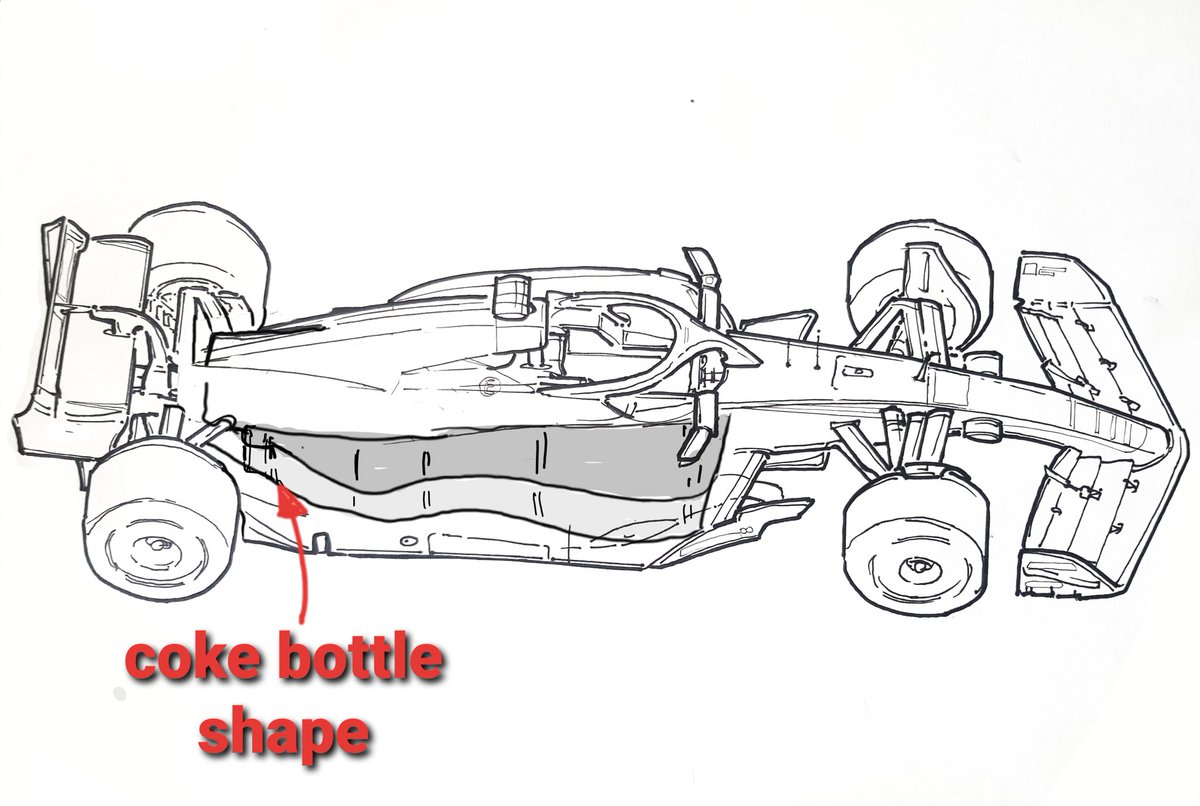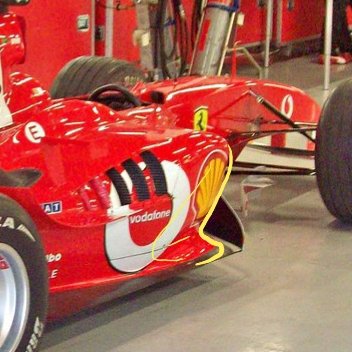It's been exactly 3 years since Romain Grosjean's huge accident in Bahrain.
The monocoque was on at the @F1Exhibition in Madrid this summer.
I took some time to look over the tub and noted the damage, which included elements I wasnt aware of...
#F1 #F1Tech
Thread....




The monocoque was on at the @F1Exhibition in Madrid this summer.
I took some time to look over the tub and noted the damage, which included elements I wasnt aware of...
#F1 #F1Tech
Thread....

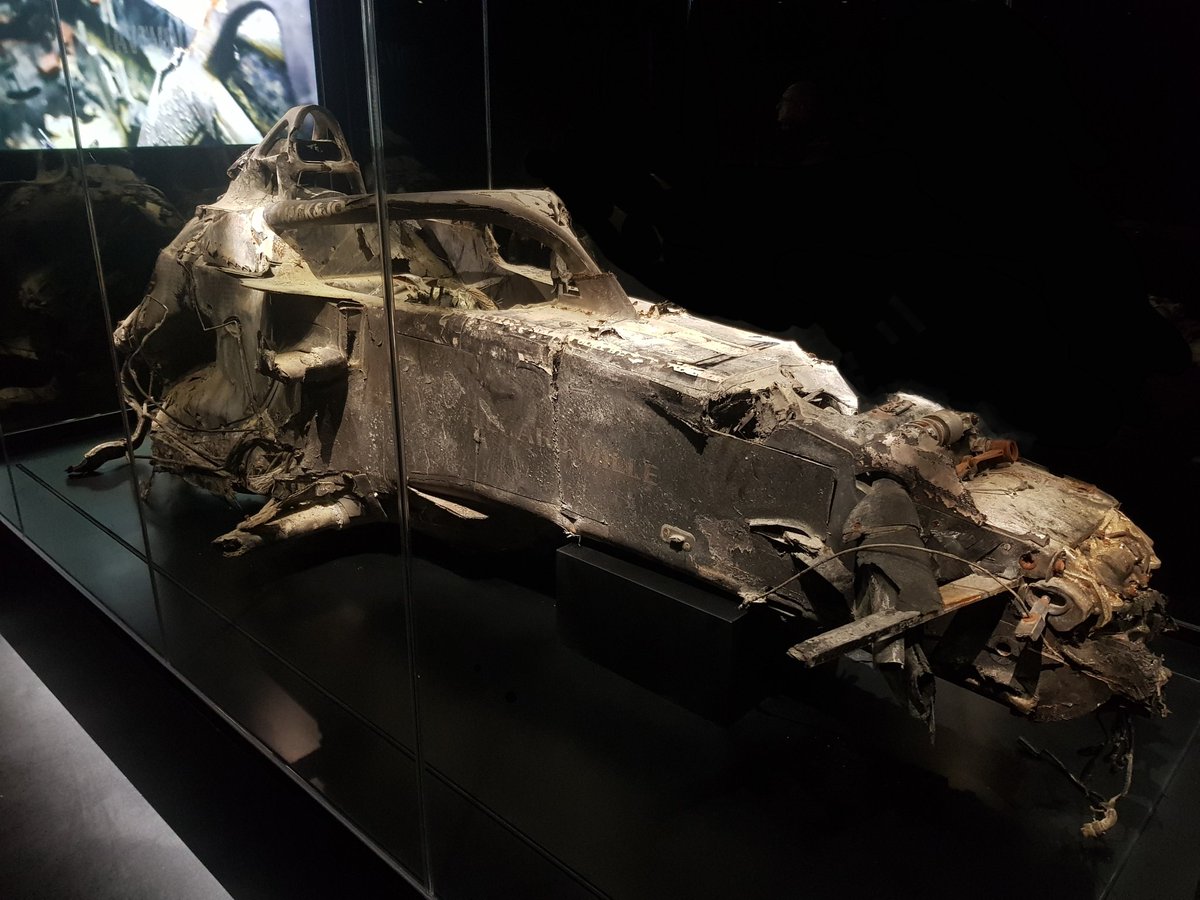

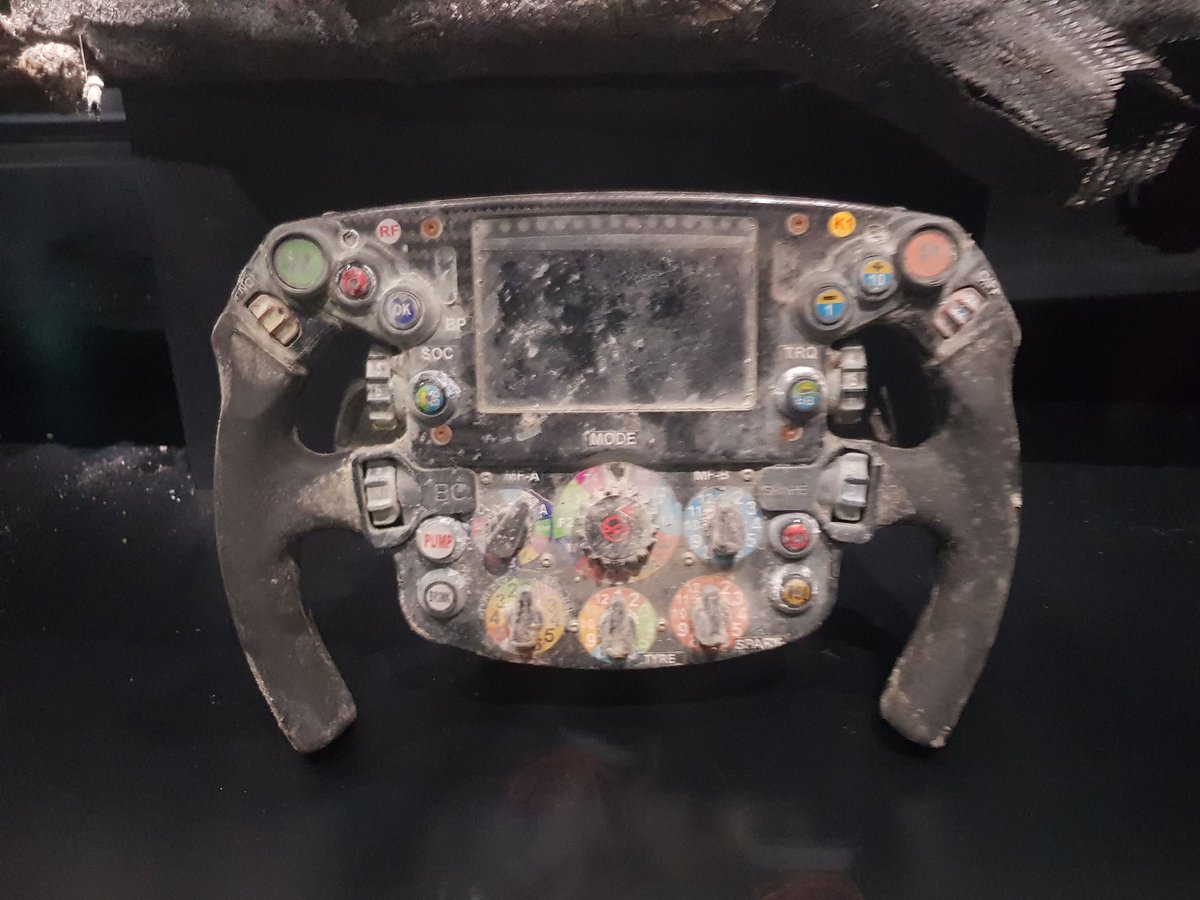
Summarising the crash
The car went intact into the barriers at 197kph, at an angle on it's right hand side. This was the biggest deceleration, 67g.
The car jammed in the barrier and flicked around to the left, breaking apart in doing so, the survival cell remaining in the barrier
The car went intact into the barriers at 197kph, at an angle on it's right hand side. This was the biggest deceleration, 67g.
The car jammed in the barrier and flicked around to the left, breaking apart in doing so, the survival cell remaining in the barrier

2)With the initial frontal hit to the barriers, the nose box wasnt evident on the car or track in the post crash pics.
But some of the nose is still attached to the right, but little remains on the left.
Most of the length of the nose appears to be used in absorbing the impact.



But some of the nose is still attached to the right, but little remains on the left.
Most of the length of the nose appears to be used in absorbing the impact.



3) Although the major impact was from the front, it was at such an oblique angle, the right upper side impact structure was crushed and then as the car flicked around both left hand structures were impacted.




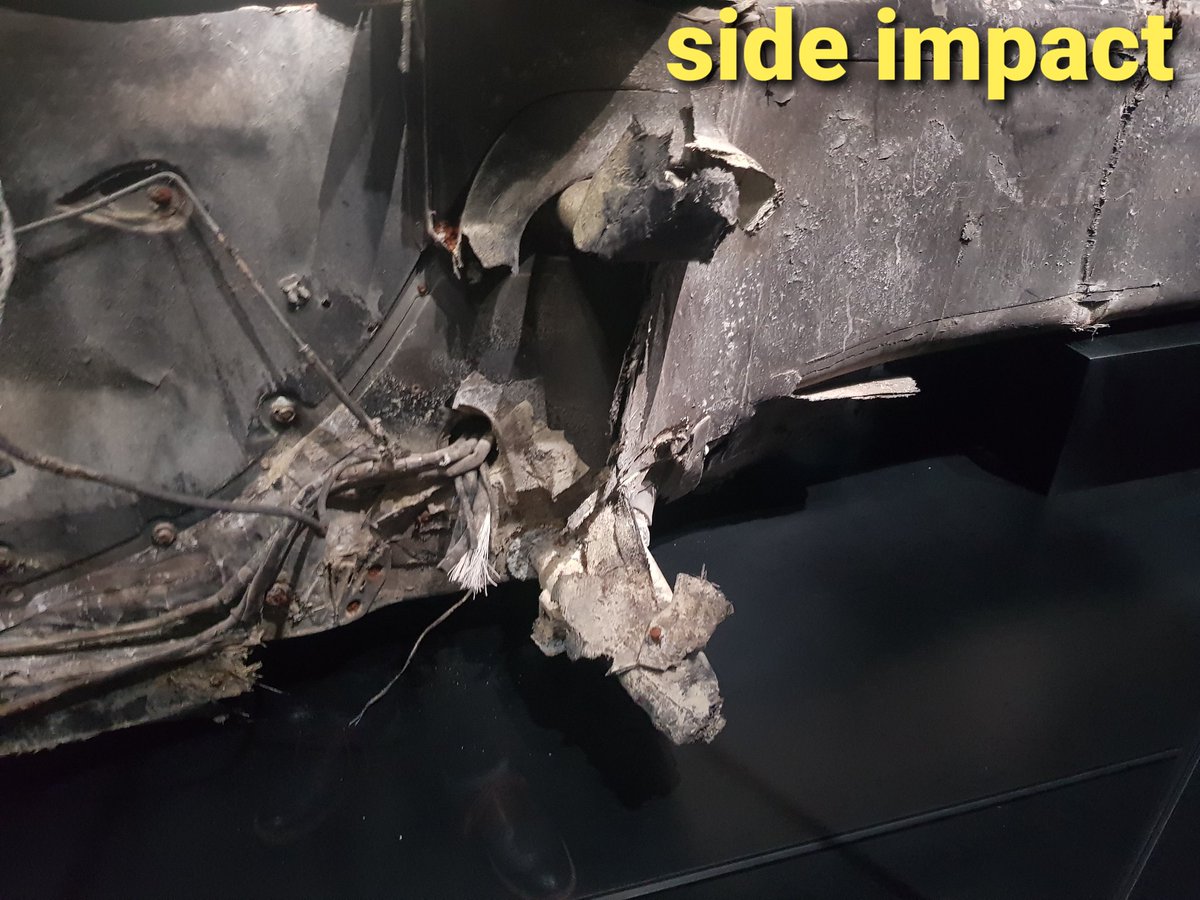
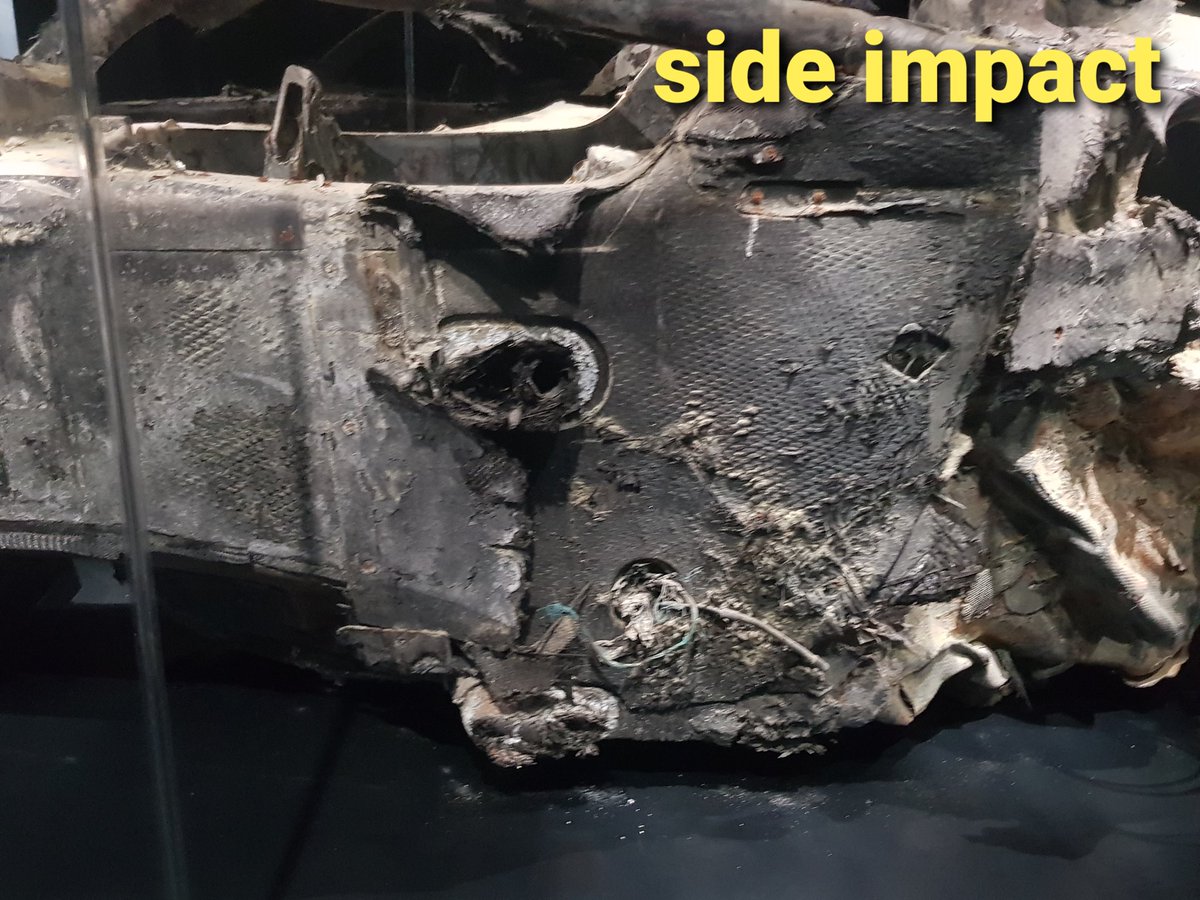
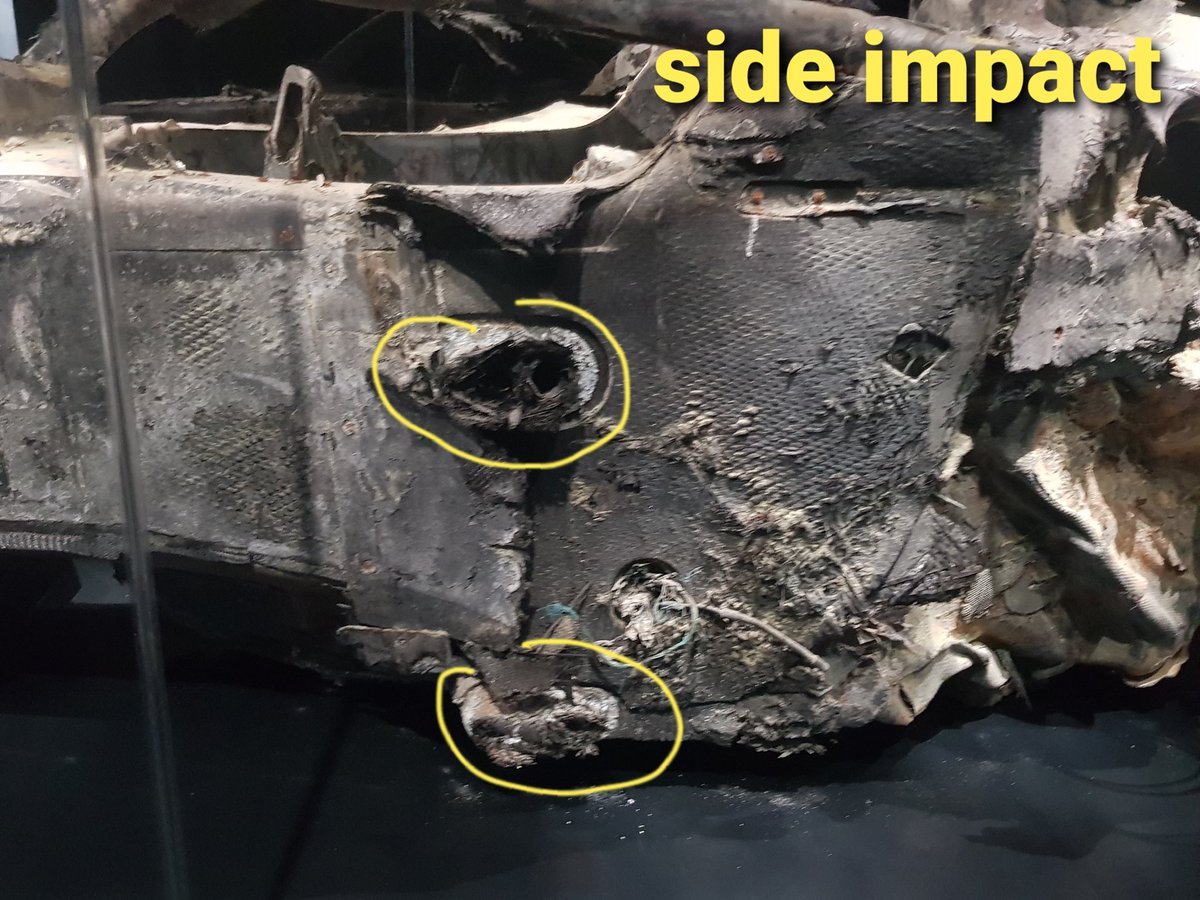
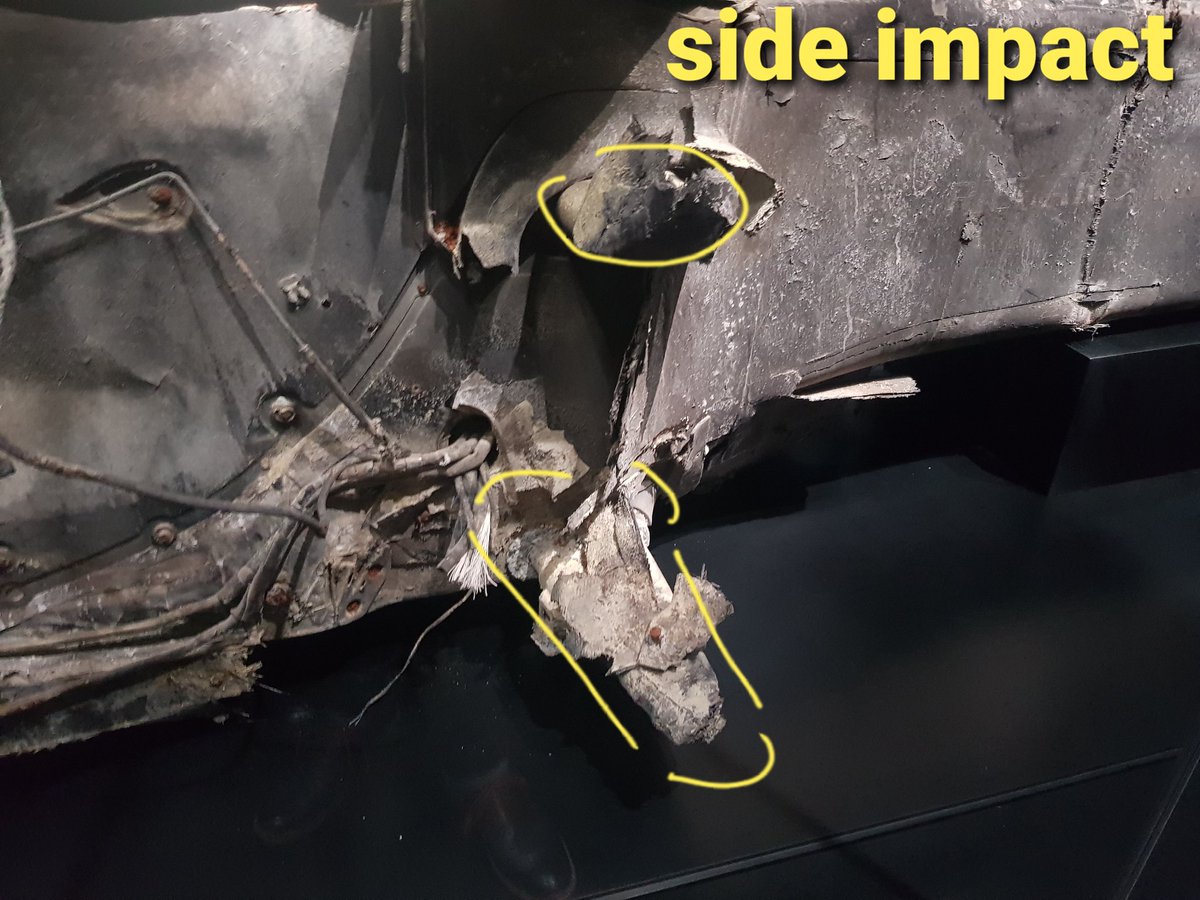
4) The tub became lodged between the barriers, but the roll hoop appears undamaged. The shape of the actual structure is evident as the surrounding bodywork was either smashed or burnt away.


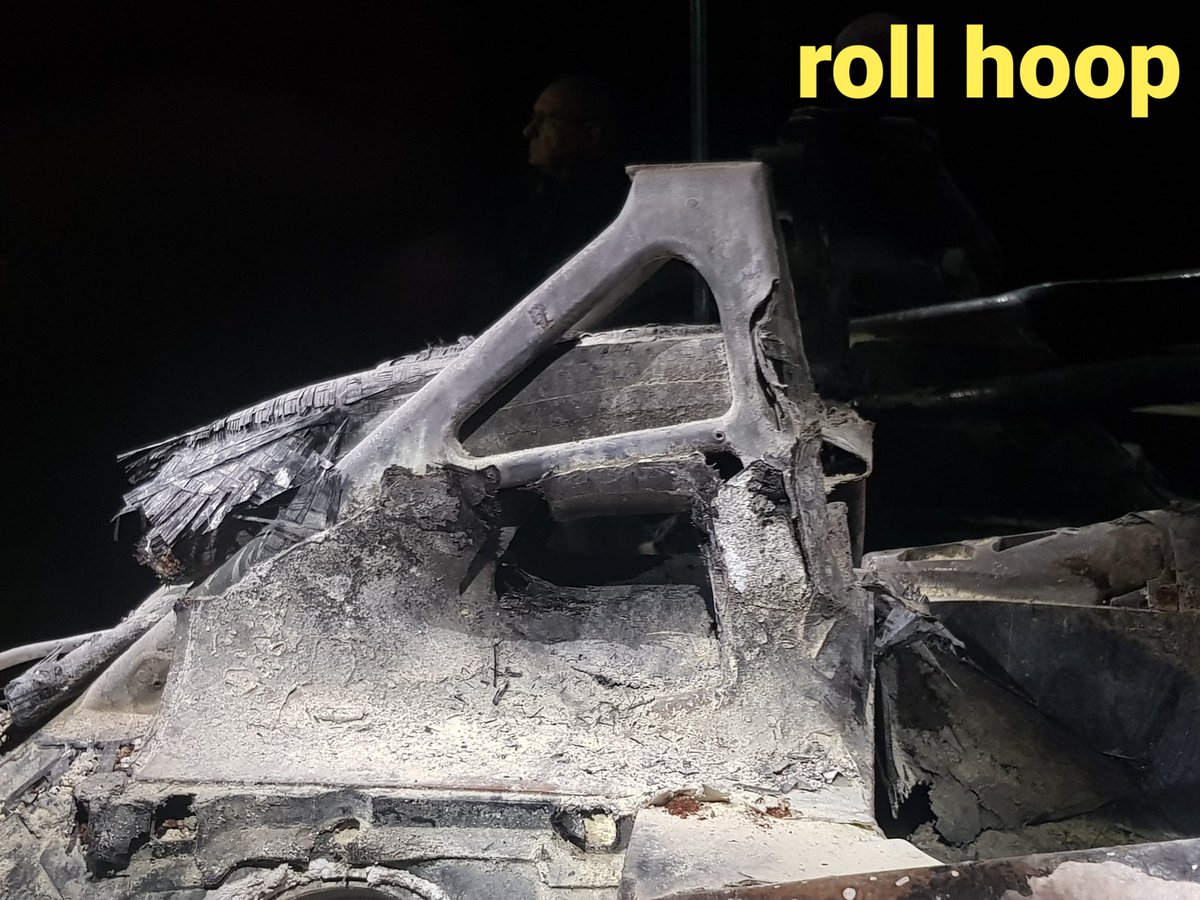
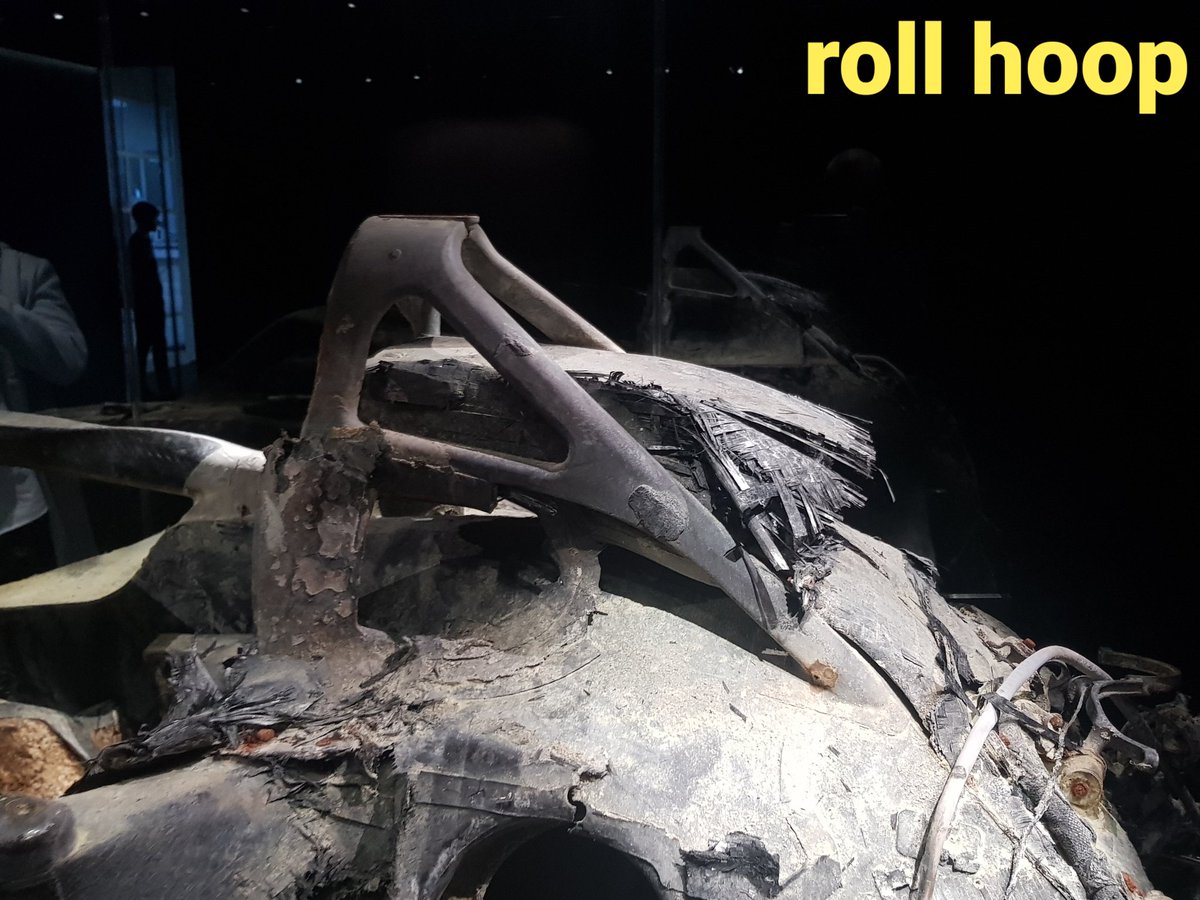
5) The effect of the car flicking around after the impact, created such huge forces the drivetrain broke away from the survival cell. But, this ripped a section of rear bulkhead off. This in itself might not have been a major issue, except where the tear in the monocoque went



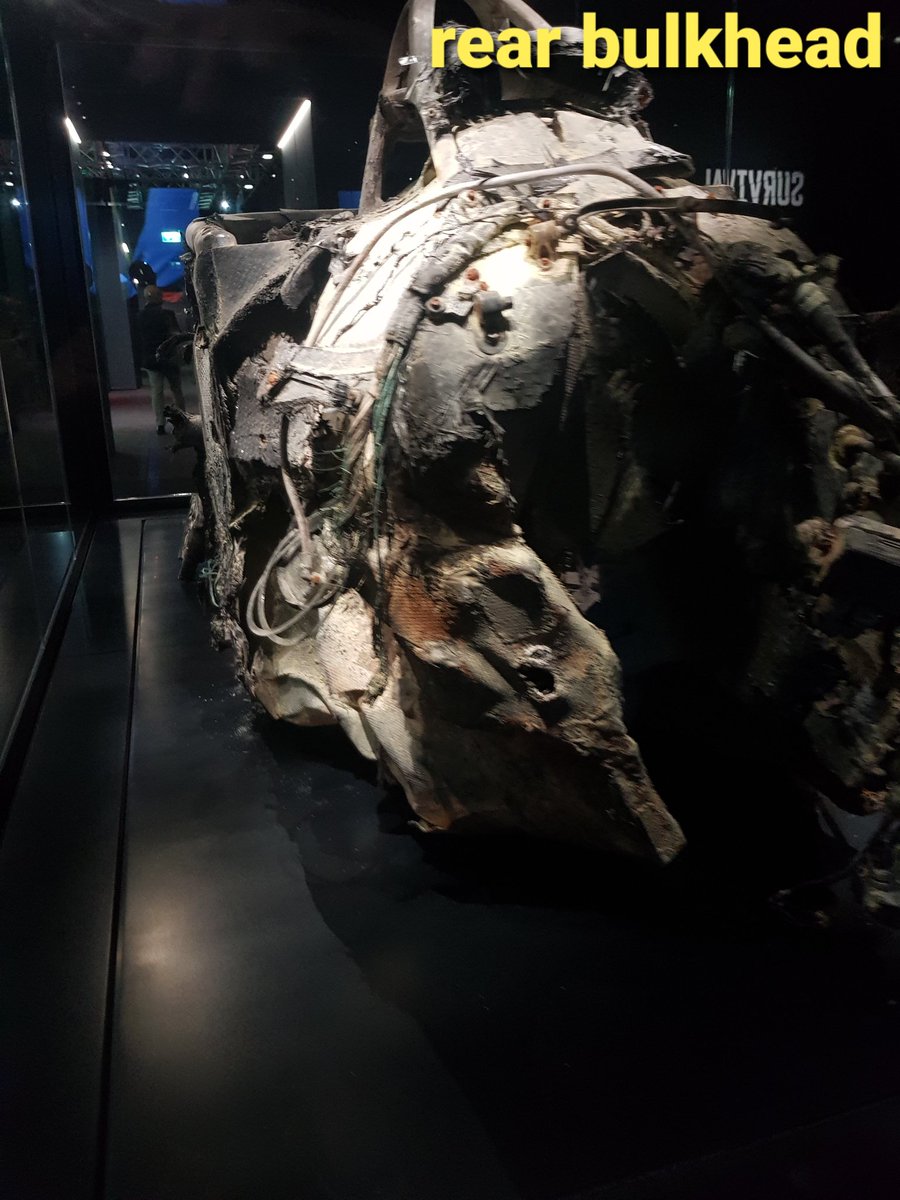
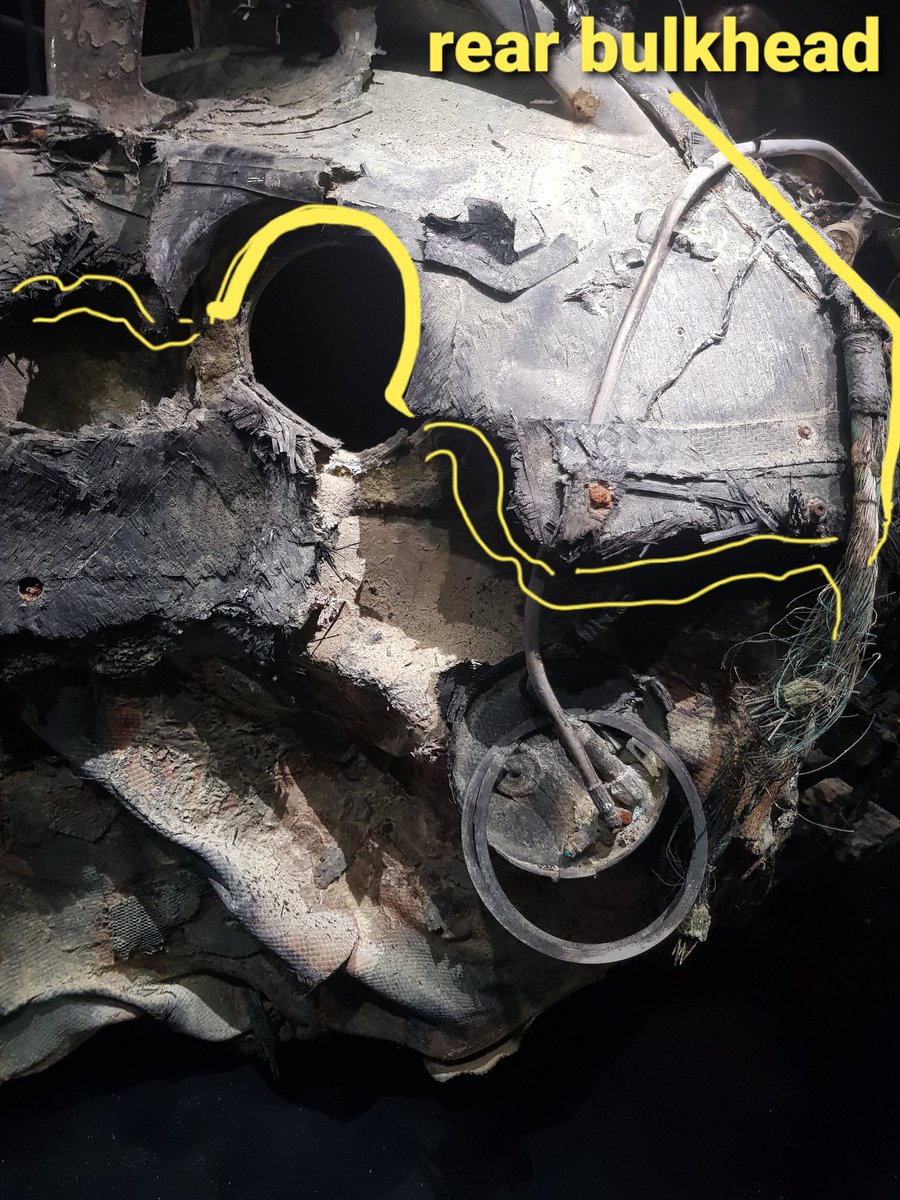
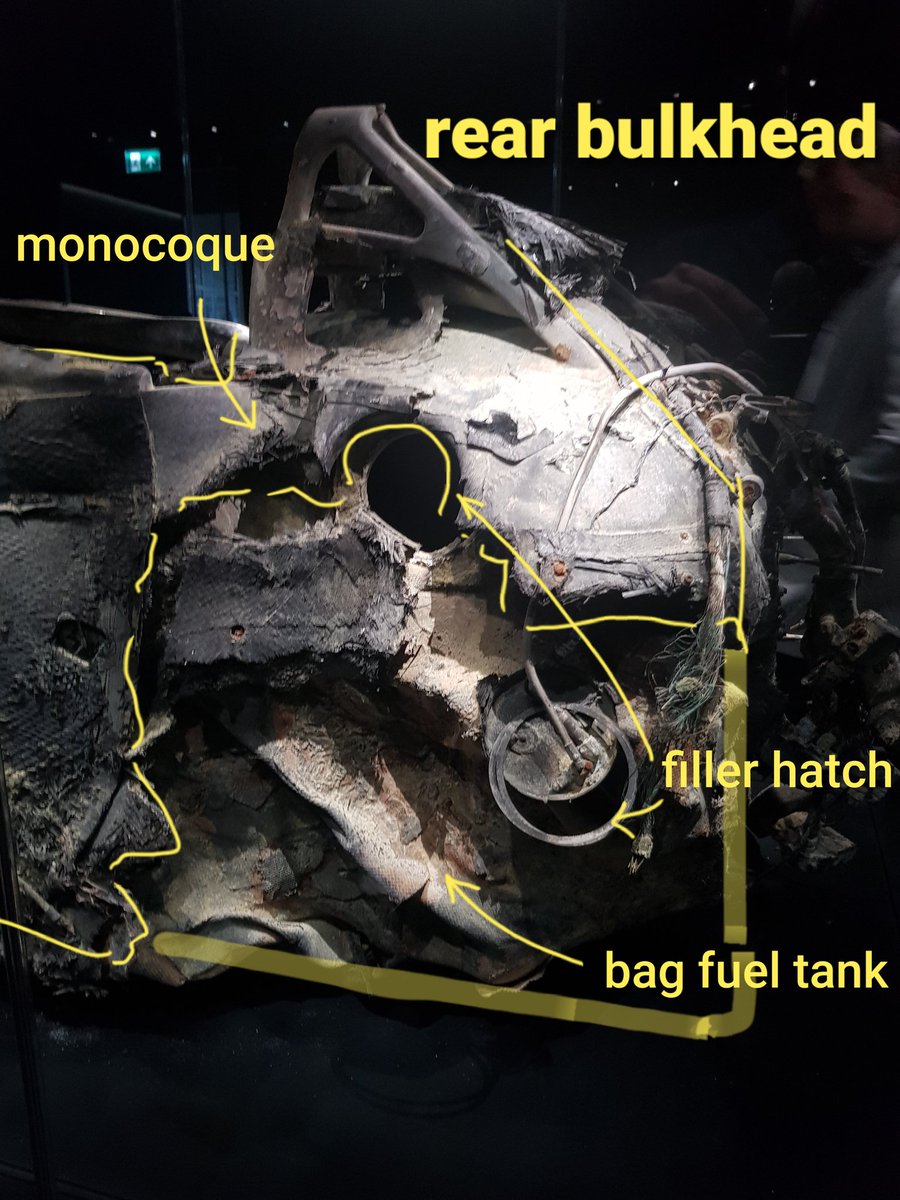
6) The exposed tank would have been 'safe'. But the section of monocoque that stayed with engine included the fuel filler hole. This ripped of the filler hatch and breached the tank. Allowing the fuel in the full tank to escape, causing the fire.




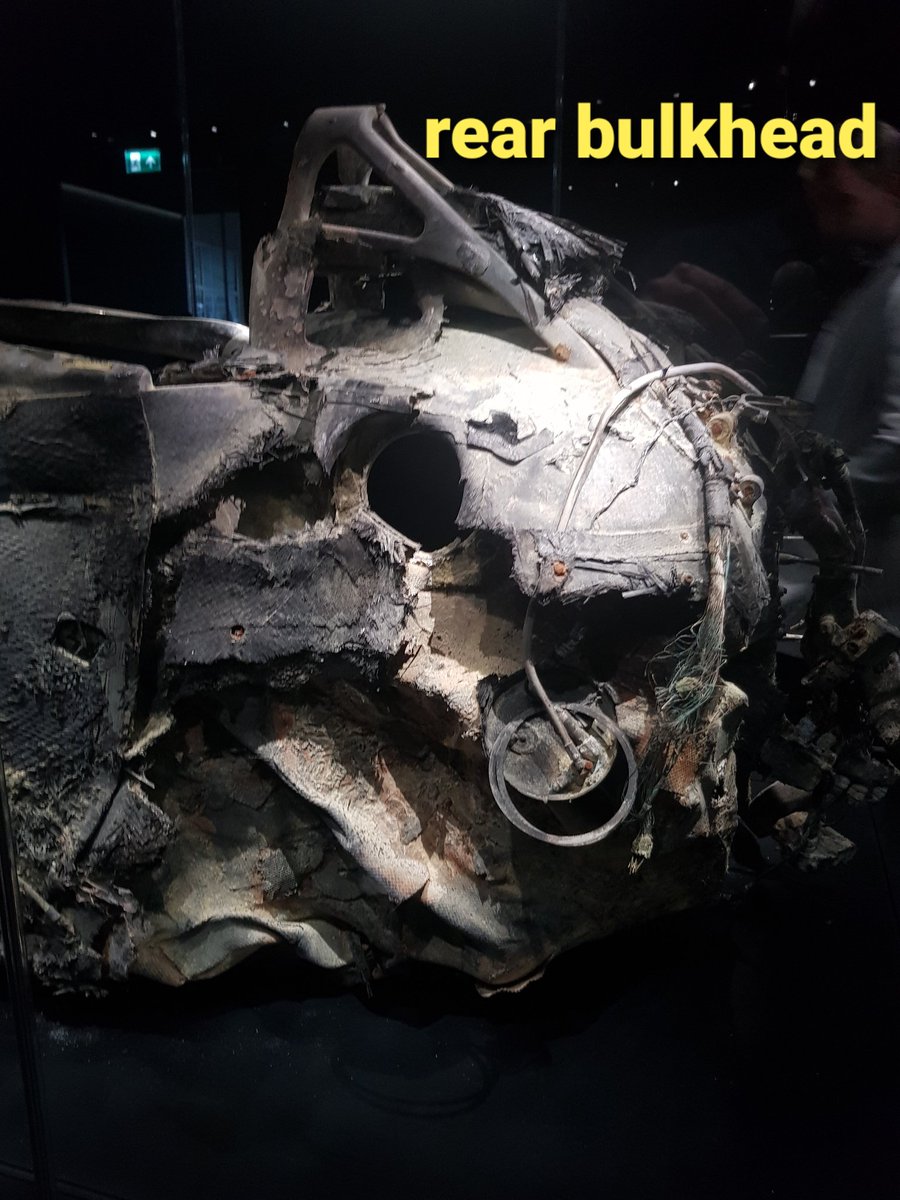
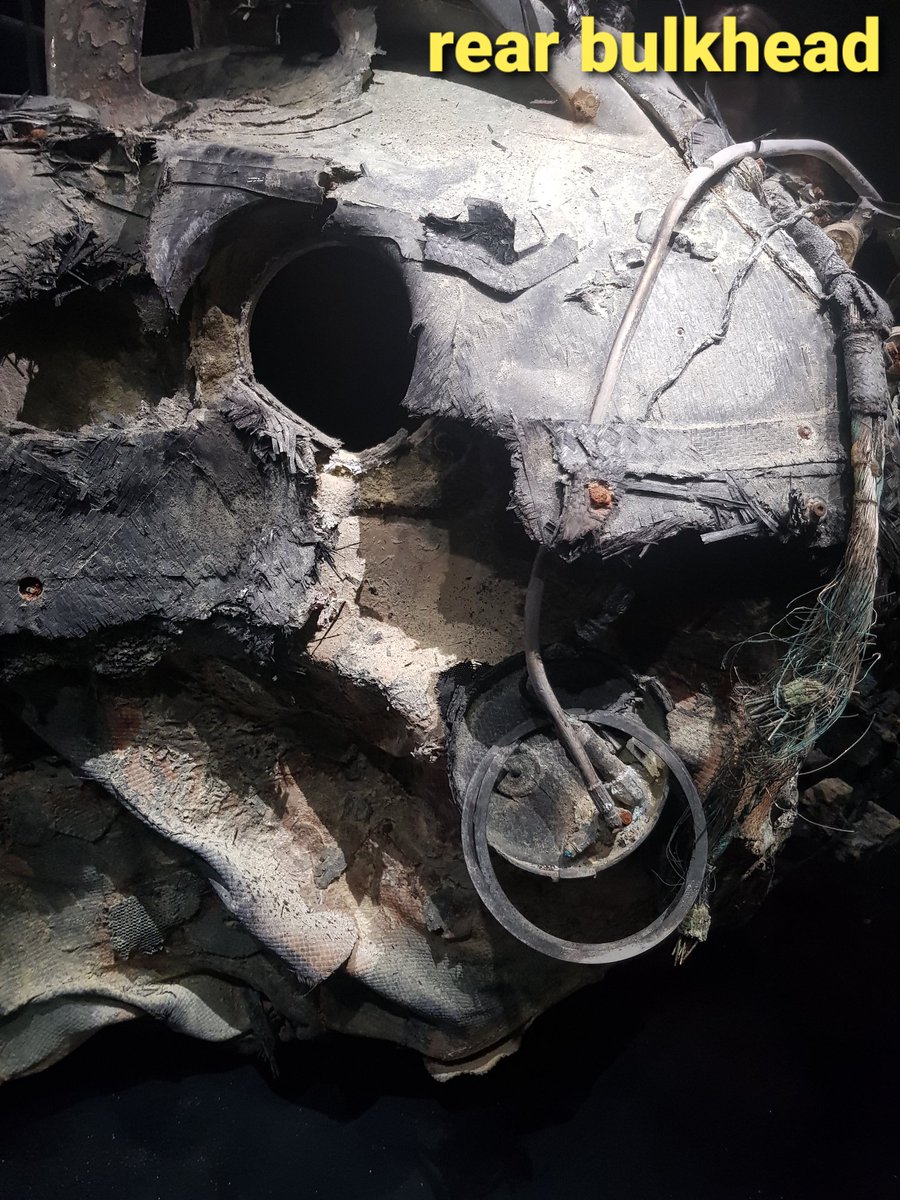
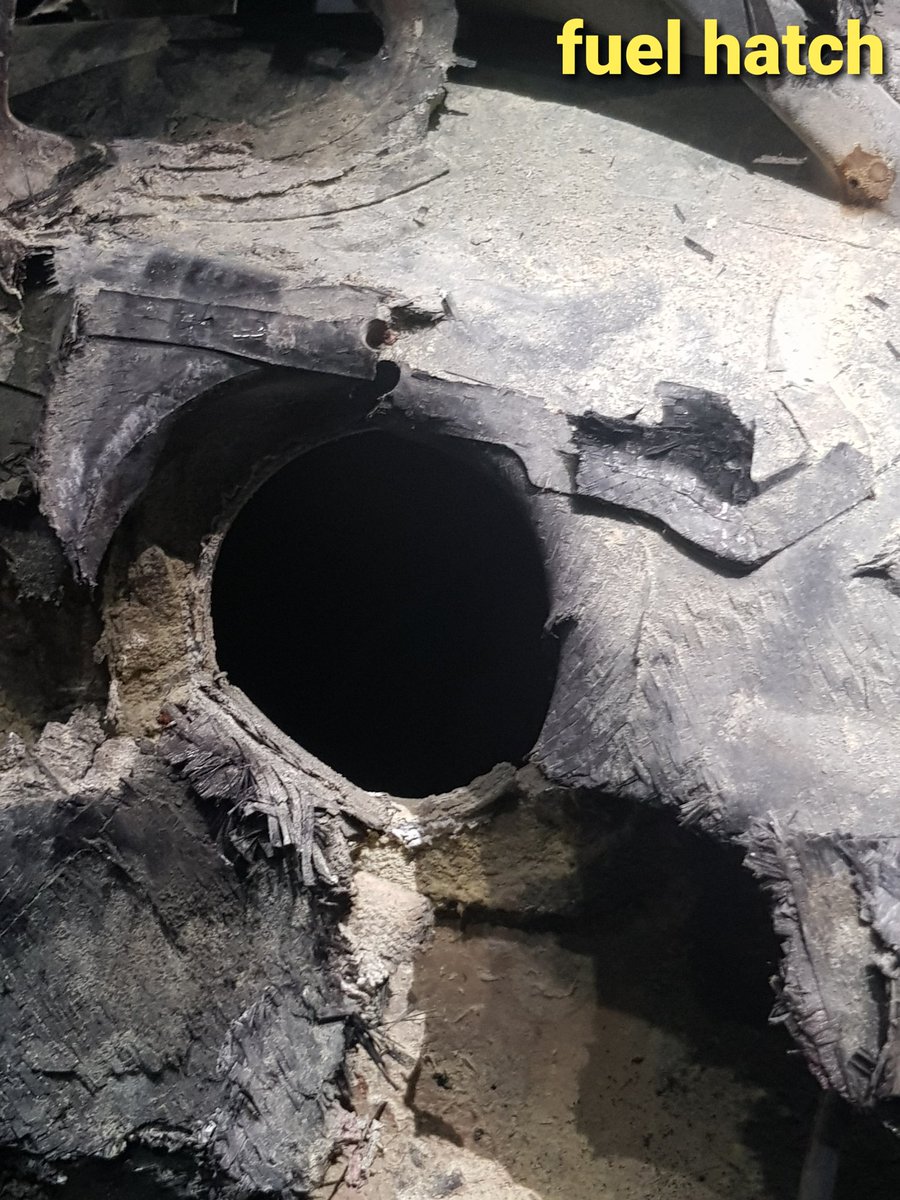
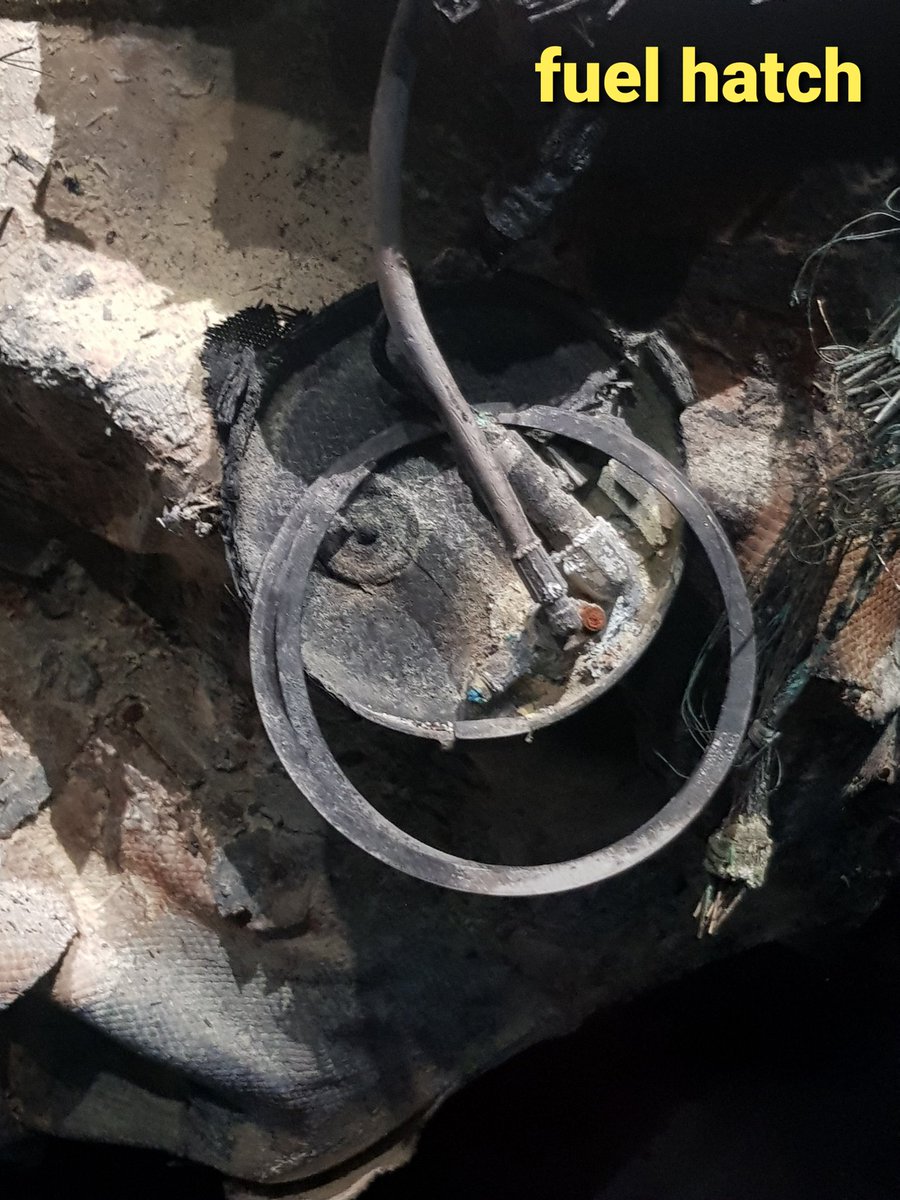
7) The ensuing fire necessitated Grosjean to escape the car quickly. The Halo jammed open the armco barrier, giving him an escape route. But the initial escape was hindered by a struggle to get the horseshoe headrest pad out of the way.
It's now been left inside the cockpit


It's now been left inside the cockpit

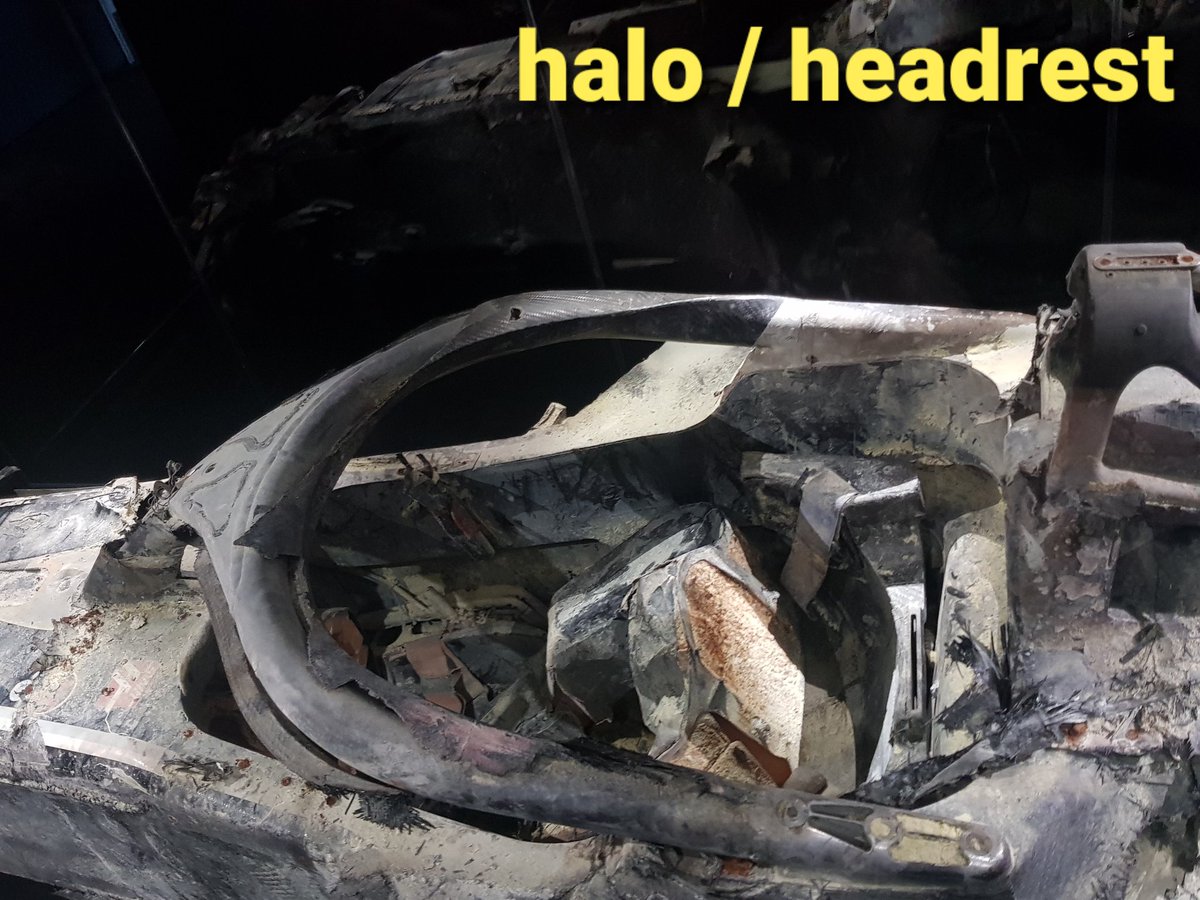
8)Unnoticed at the time, was as the car went nose in & flicked around, the chassis cracked almost all the way around!
Thankfully the survival cell remained in one peice
This is a common failure in a nose-in flick-around incident, it needs a @FIA review to prevent future failures.




Thankfully the survival cell remained in one peice
This is a common failure in a nose-in flick-around incident, it needs a @FIA review to prevent future failures.
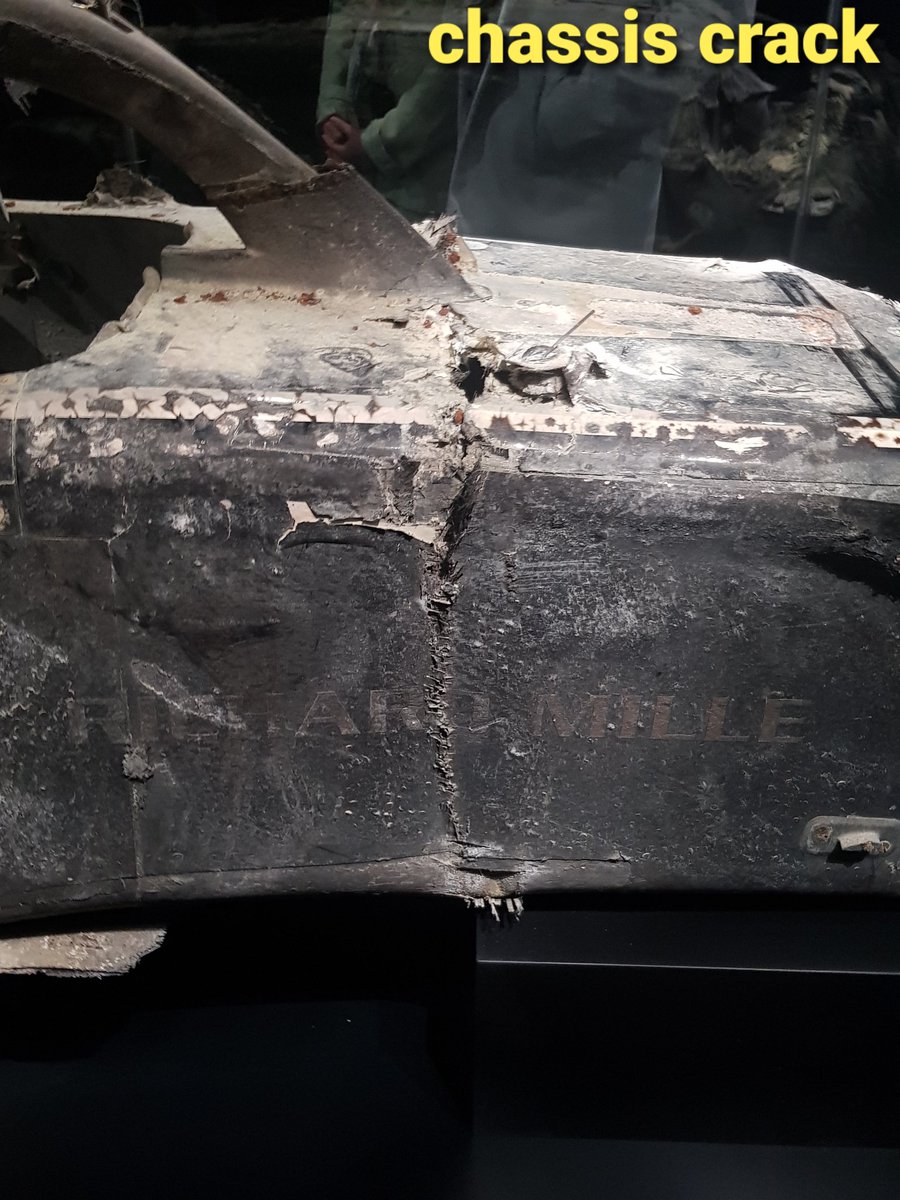
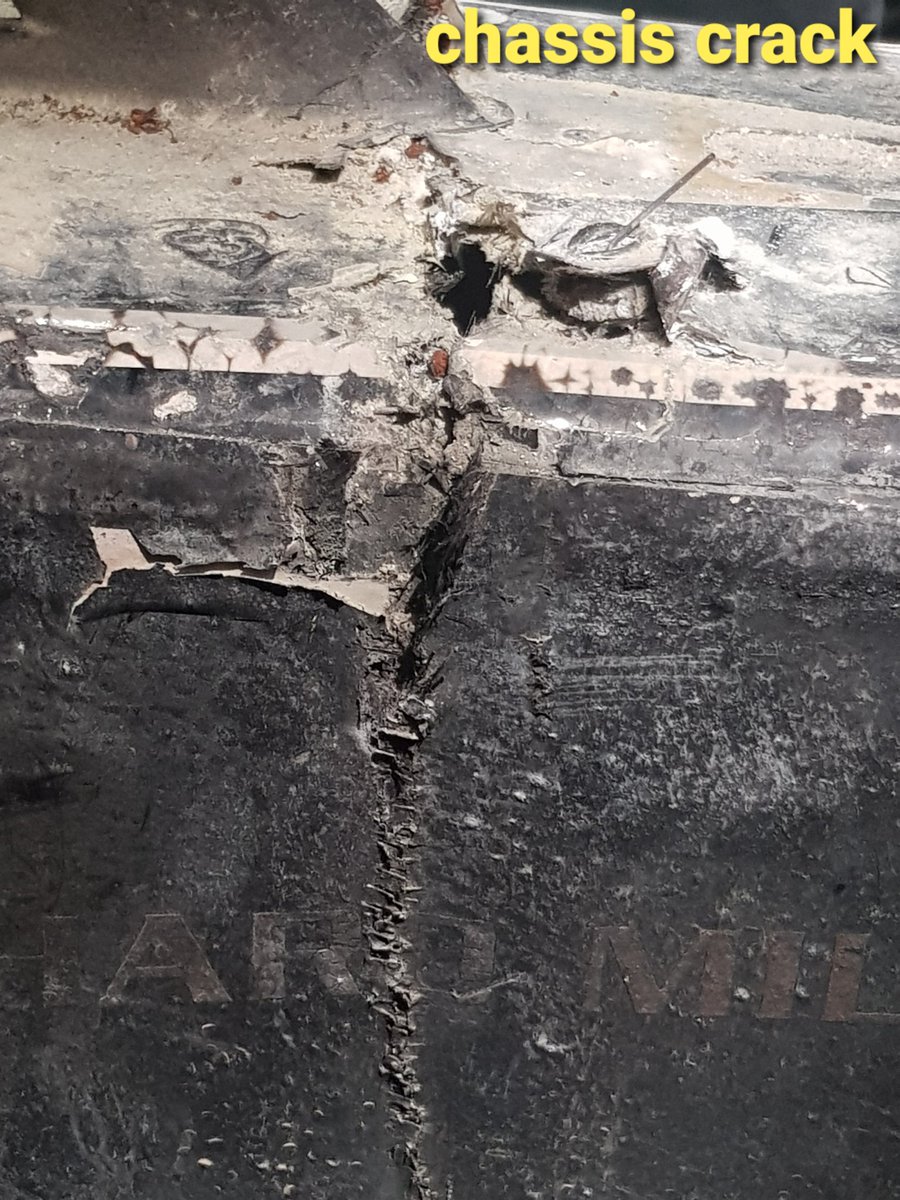
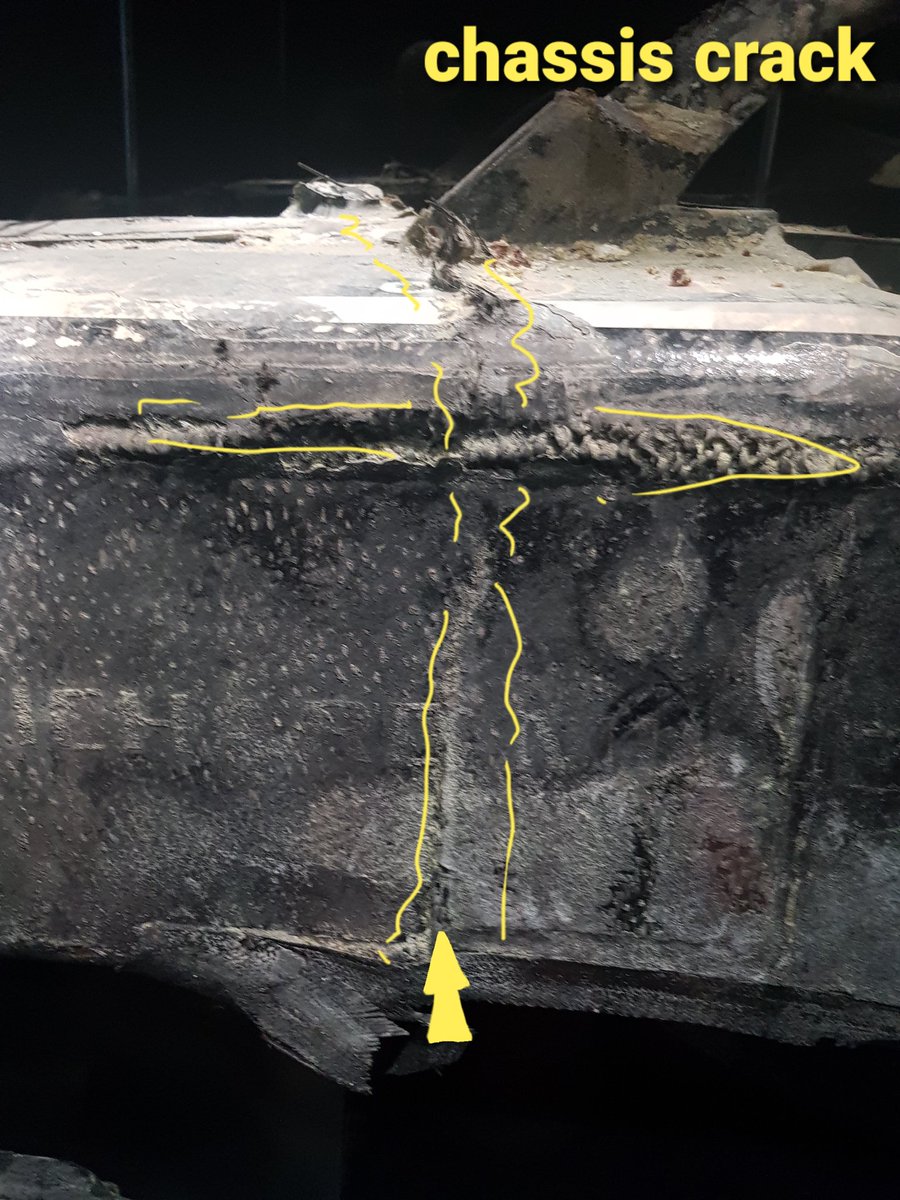
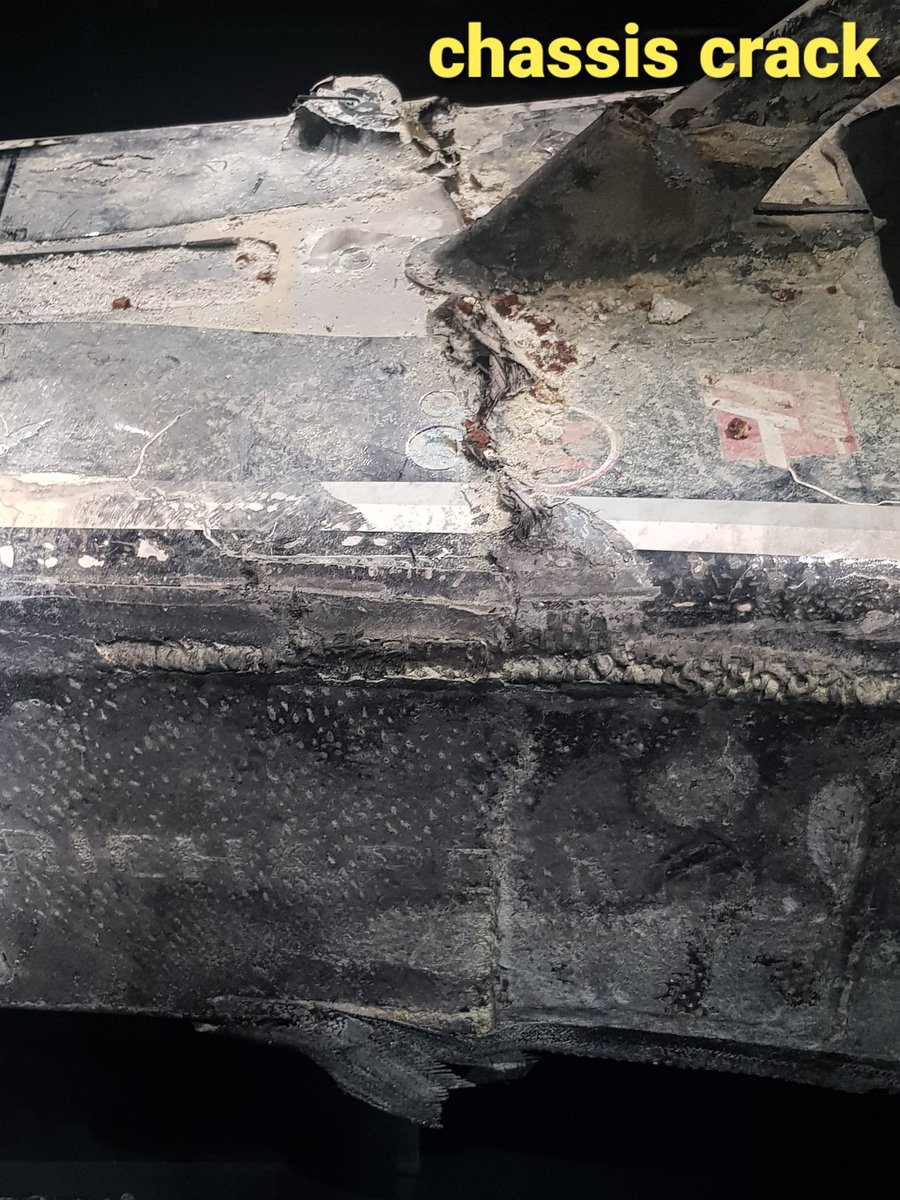
9) The other issue that delayed Grosjean escaping the fire was his left foot being trapped by the brake pedal, his shoe was left in the car as he escaped.
It looks like it wasn't caused by the pedal itself failing, but by crushing of the footwell, as the car flicked to the left.




It looks like it wasn't caused by the pedal itself failing, but by crushing of the footwell, as the car flicked to the left.
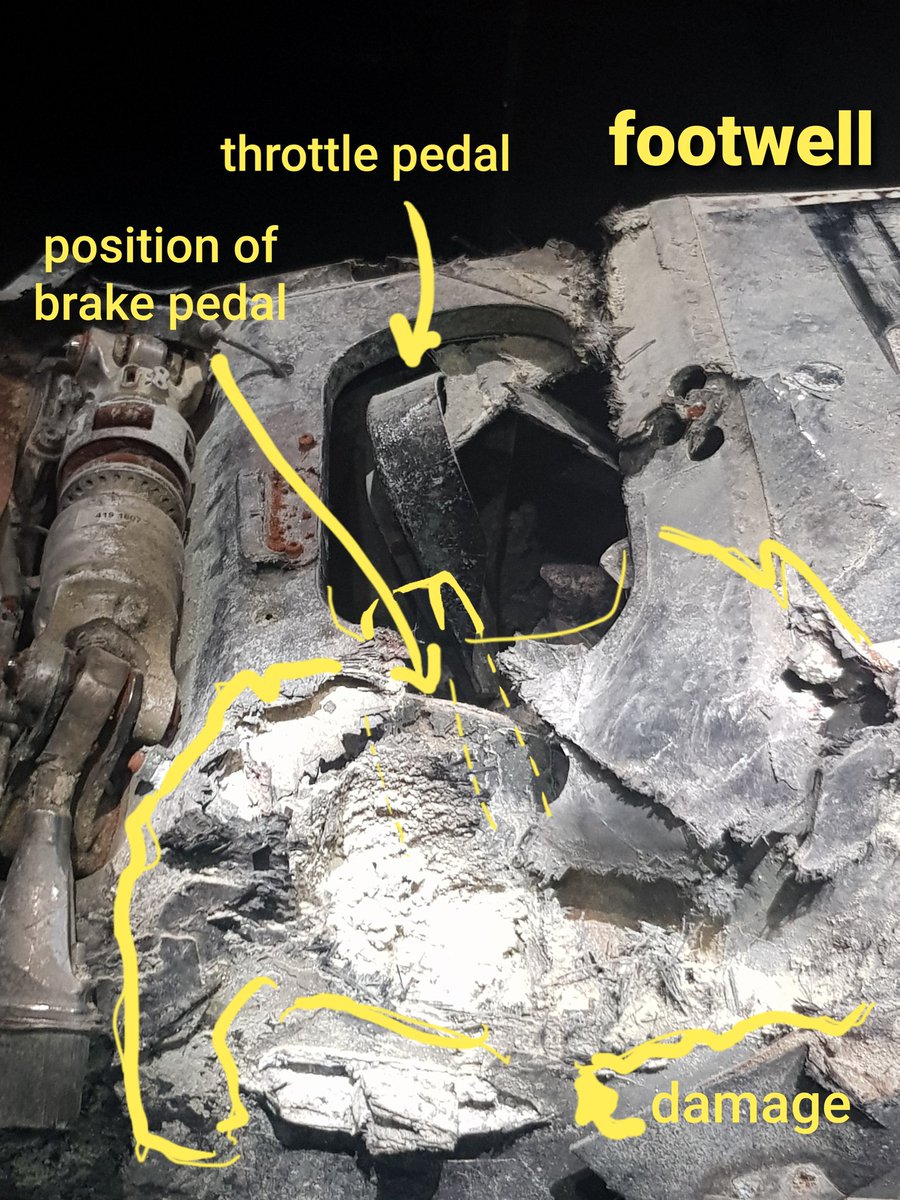
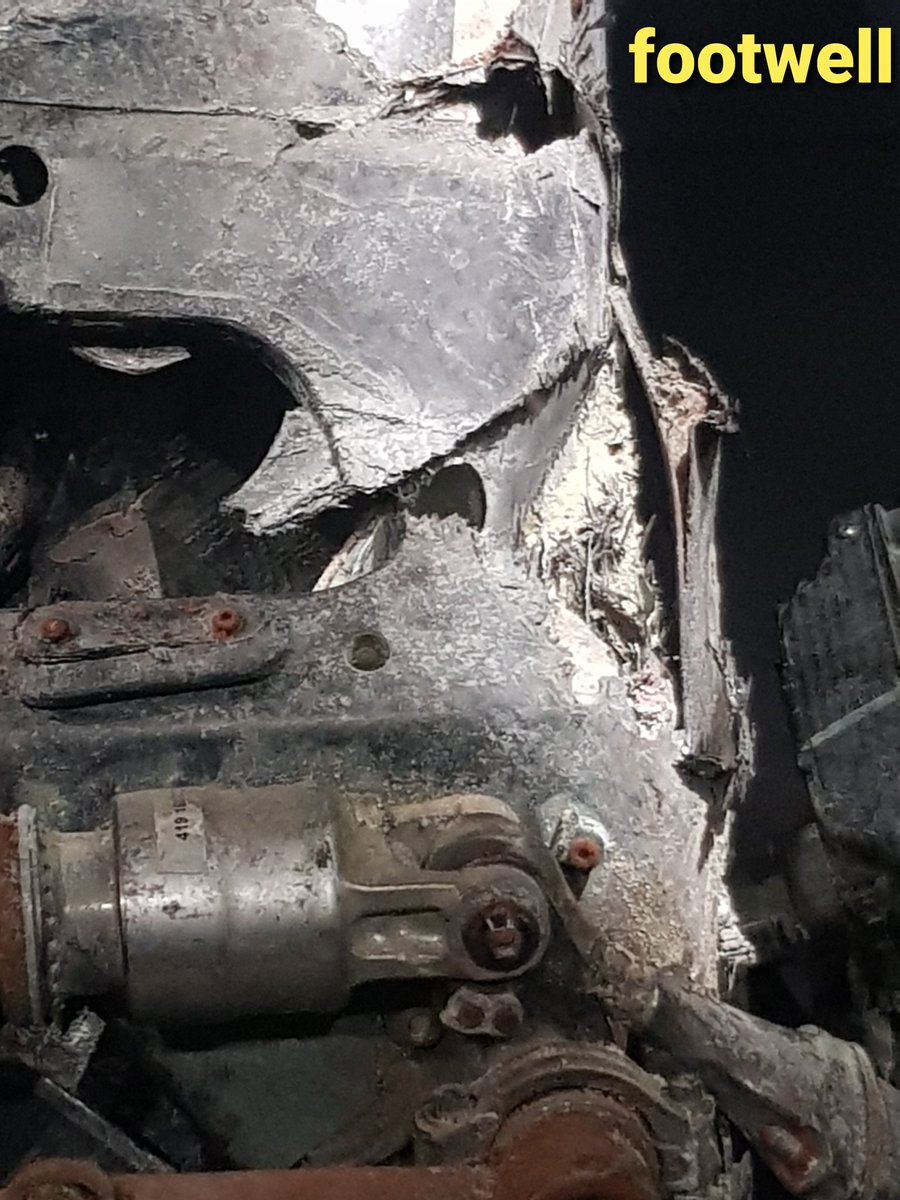
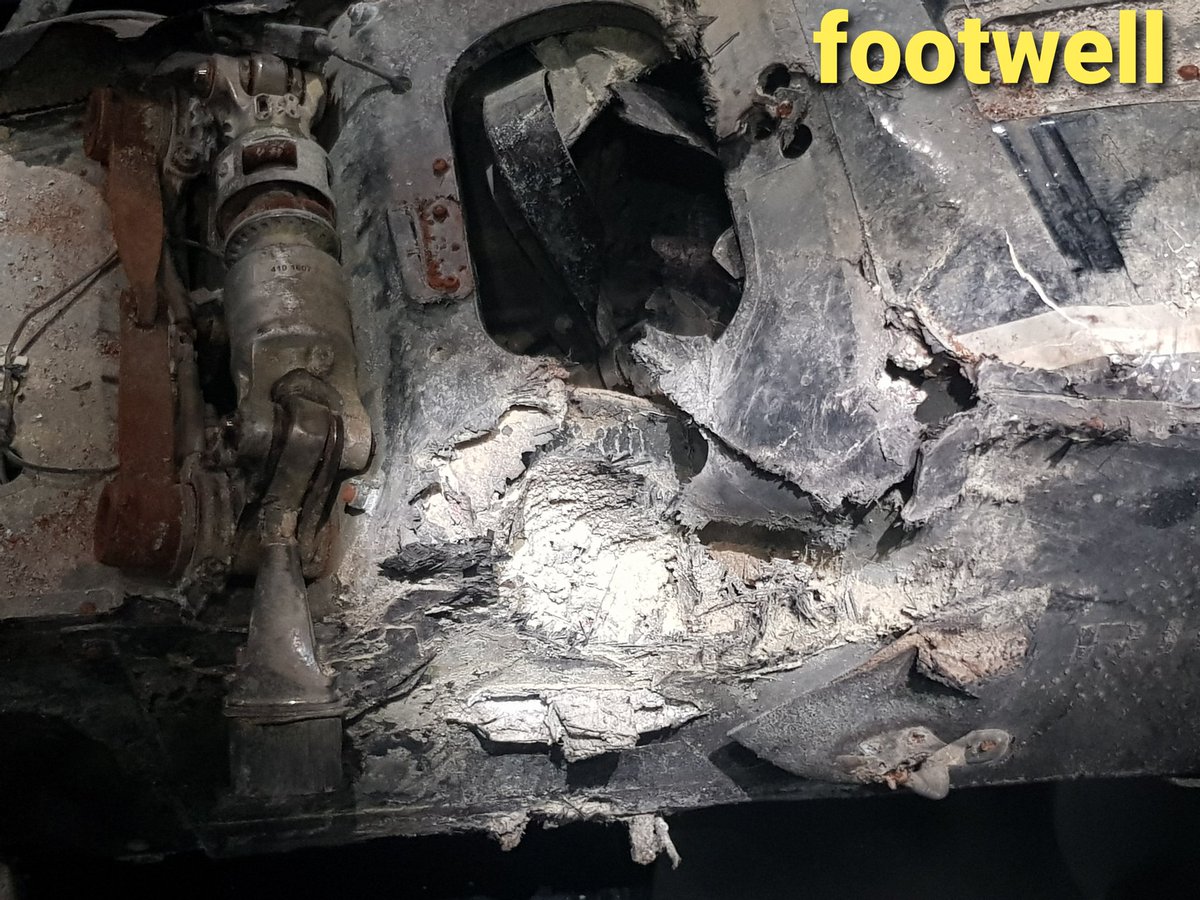

Lots of lessons have been learnt and applied to the rules since the accident. Especially the engine bulkhead mounts and fuel filler aperture.
But, IMO it appears there's more to be done in future rules to mitigate against some of the failures seen here.
But, IMO it appears there's more to be done in future rules to mitigate against some of the failures seen here.
• • •
Missing some Tweet in this thread? You can try to
force a refresh

 Read on Twitter
Read on Twitter





























